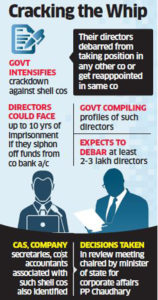
India’s foreign exchange reserves have climbed tantalizingly close to the $400-billion mark on September 1 on the back of strong foreign portfolio investments into the Indian market, especially the debt segment
The reserves are hitting the psychological threshold also because benign current account deficits over the last few quarters had allowed RBI to use less of the reserves to finance it.
While the rupee remains strong against the dollar at levels of 64 having appreciated 6% so far in 2017, few would have anticipated this strength, especially after the free fall of the currency in mid-2013 when it slipped all the way to 68.85 against the greenback (the forex reserves had plunged by more than $17 billion during this period).
The other critical period for the reserves and currency was in 2008, during the financial crisis when the currency lost almost 25% of its value between May and November. In this period, the reserves fell by a little over $70 billion to $245.8 billion.
Currently, the reserves take care of approximately 12 months of imports; in the past the reserves have typically covered seven to eight months of imports. Interestingly, India has seen the third-highest reserves accretion globally after Switzerland and China, so far in 2017.

According to Indranil Sengupta, chief economist at Bank of India Merrill Lynch, RBI has been intervening fairly aggressively in the forex market and might continue to do so if the dollar weakens but perhaps less so if the greenback was to strengthen.
After a brief overnight pause, the rupee was again caught in a downward spiral and slipped by 12 paise to 64.12 against the US dollar on Thursday on fresh demand for the American currency from banks and importers amid persistent foreign capital outflows. Foreign portfolio investors sold shares worth a net Rs 827 crore on the day.
Meanwhile, India’s CAD, which stood at 0.7% in the fourth quarter of last fiscal is expected to widen sharply to 3% in Q1FY18 due to a sharp deterioration in the merchandise trade deficit. According to Sonal Varma, chief economist at Nomura, the low commodity prices in the last two years have resulted in the CAD narrowing to about 1% of GDP. “With commodity prices marginally higher and a cyclical recovery expected in coming quarters, we expect the current account deficit to widen to a steady state of around 1.5-2.0% of GDP (for FY18),” Varma said.
Currently, as the central bank continues to shore up the reserves, it appears to be depending more on forward purchases than the spot market. This is due to the abundant liquidity in the system which prevents excessive action in the spot market.
MV Srinivasan, vice-president, Mecklai Financial Services believes the RBI is attempting to prevent any appreciation of the rupee beyond 63.80 levels. “The central bank is trying to rein in the excess liquidity in the system through OMO sales and dollar purchases in the spot will counter these measures,” he says.
Srinivasan believes that if the US Federal Reserve begins to reduce its balance sheet size, there could be forex outflows following which the RBI might intervene to stabilise the markets. Net portfolio inflows to the India’s bond and stock markets have been to the tune of $26.7 billion so far in 2017.
Source: Financial Express







